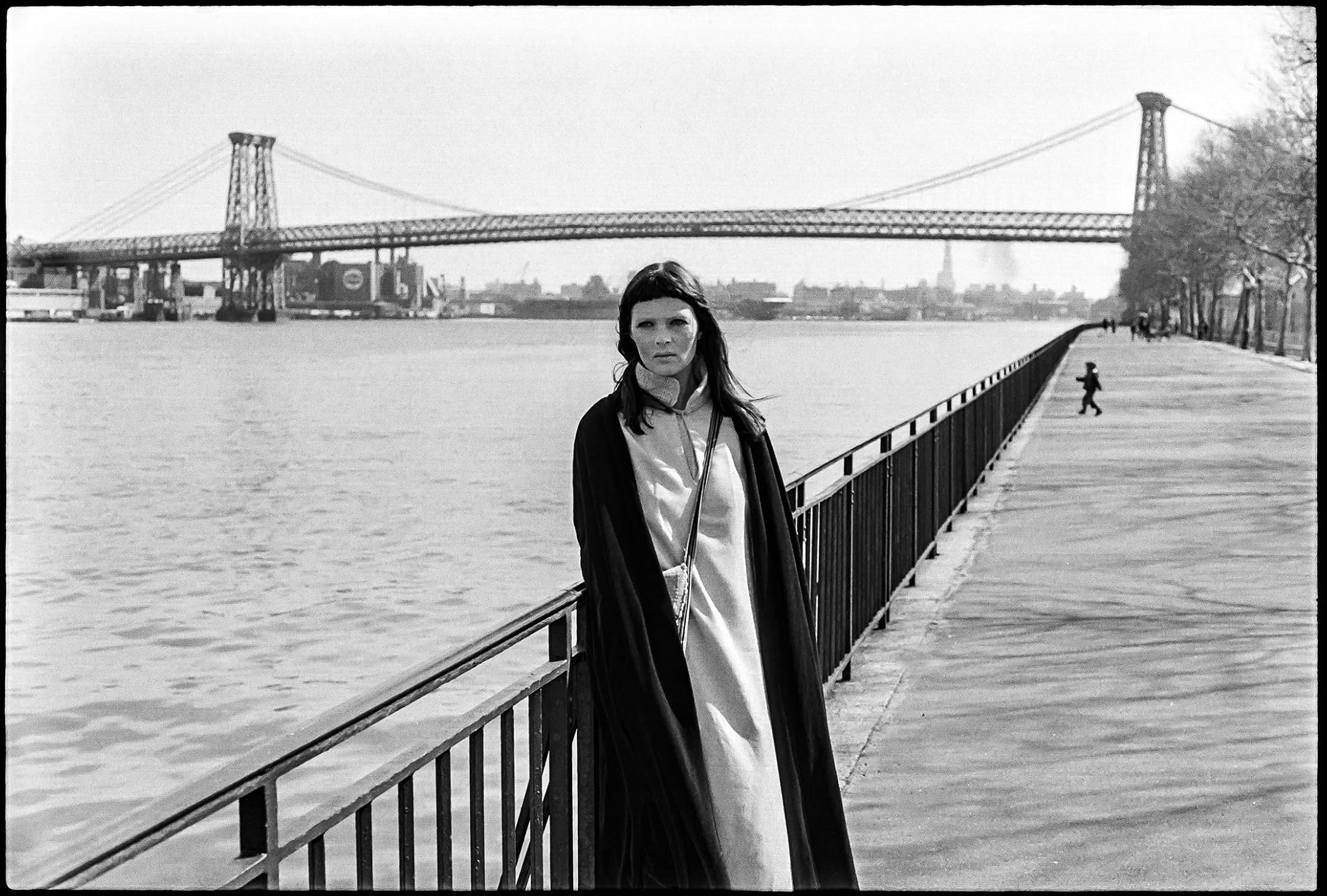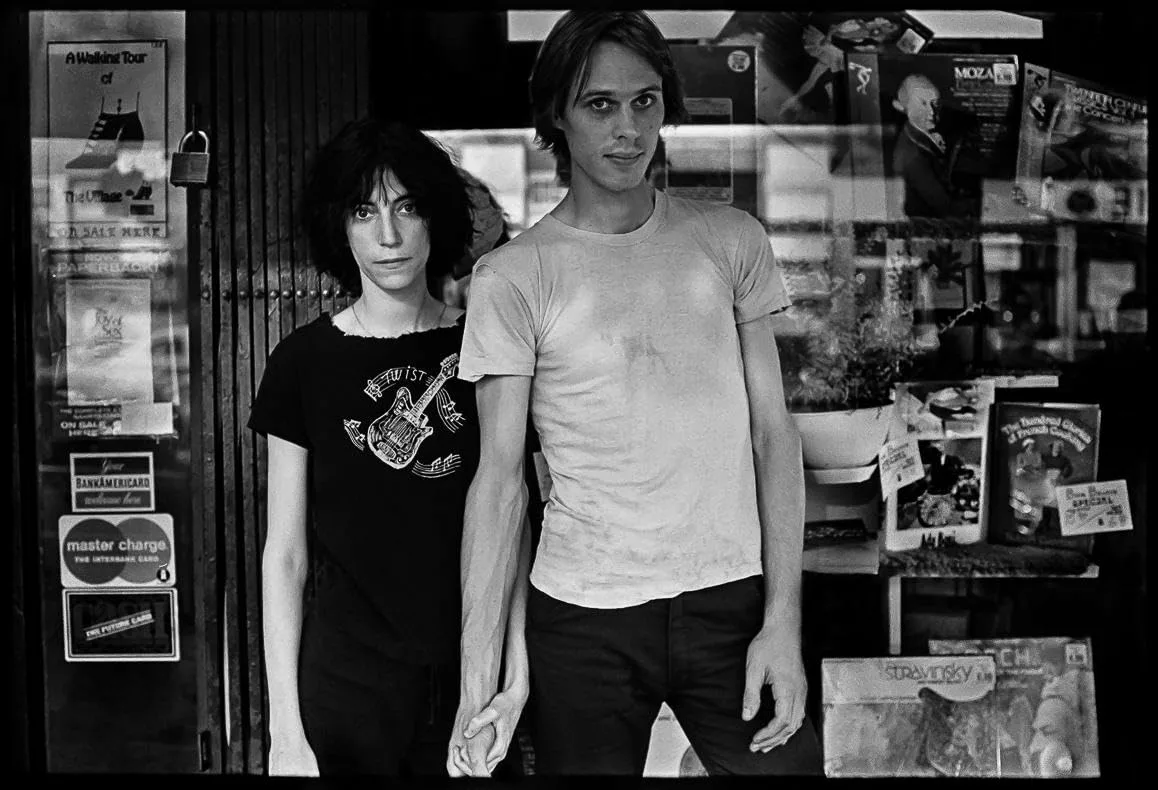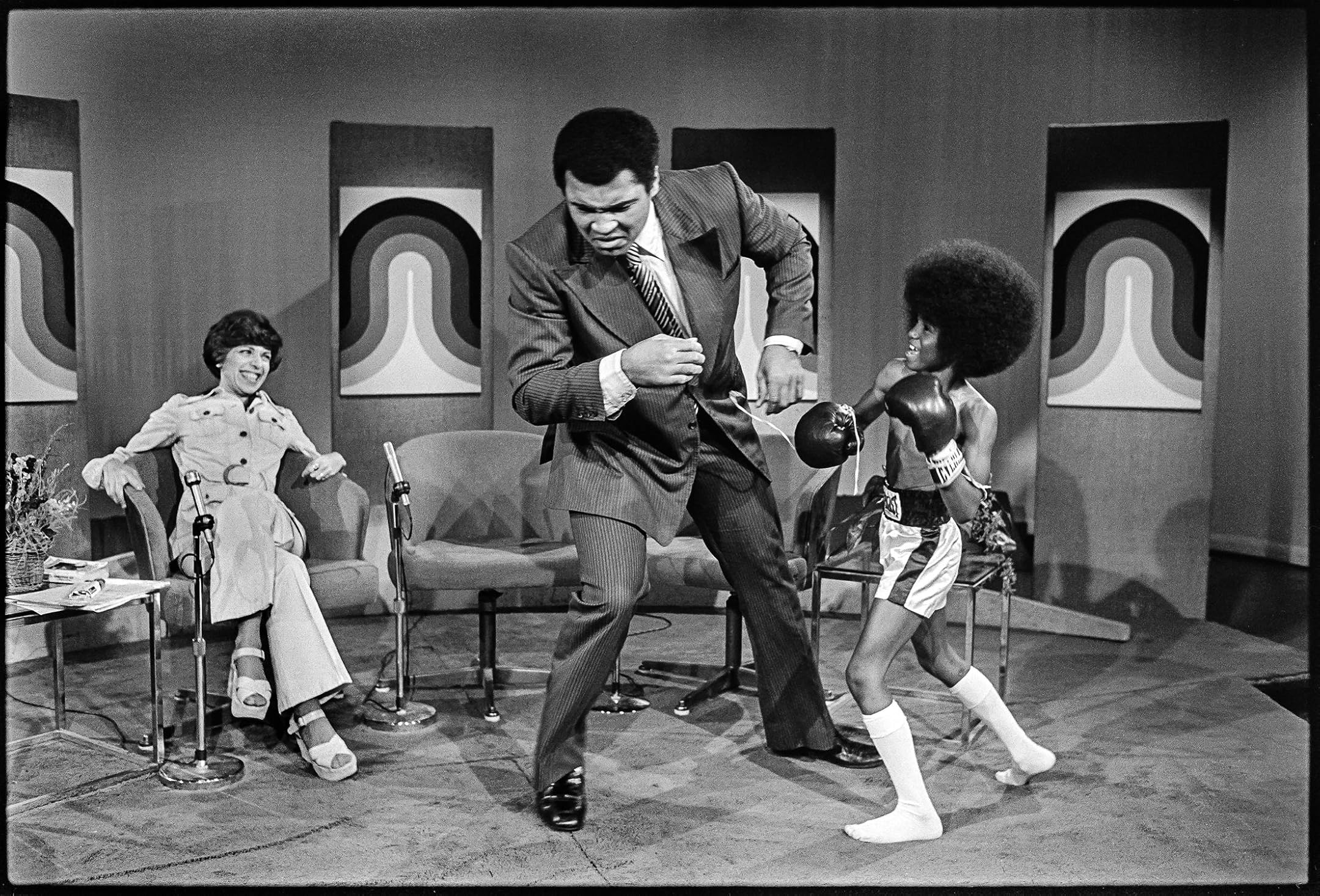Long before camera phones and social media, James Hamilton roamed the streets of New York, capturing the city on film. For decades, his images documented the changing cultural scenes in both print and on movie sets. Now director D.W. Young shines the spotlight on Hamilton and his remarkable career through the documentary “Uncropped“.
From rock concerts to war zones, we see the rich variety of subjects that have crossed Hamilton’s lens over the years. But don’t expect a stuffy film full of dates and facts; through intimate interviews, Hamilton brings those memorable moments vividly back to life.
We also hear from friends and colleagues who enjoyed unprecedented access in those pre-publicist days. Young uses their recollections to paint a portrait not just of one photographer but of a bygone era in journalism where frontline reporting flourished. Overall, the film offers an entertaining and thought-provoking look at Hamilton’s life through his photographs, shedding light on the art of photojournalism.
A Photographer’s Journey
James Hamilton’s journey behind the lens began at a young age. Growing up in New York, he developed a passion for film from his aunt, who took him to see Psycho, and his mother, who introduced him to Citizen Kane. This sparked his interest in photography. By the late 1960s, he carried his camera everywhere, exploring the city and music scene.
Hamilton got his big break shooting concerts for Crawdaddy magazine. His intimate shots of rock stars on and off stage caught the eye of editors. This led to steady work throughout the 1970s photographing the counterculture for publications like Harper’s Bazaar and The Village Voice. Whether documenting protests, underground clubs, or celebrity portraits, Hamilton had a gift for capturing subjects in candid moments.
Now based at the Village Voice, Hamilton explored varied beats. He embedded with gangs in Coney Island and brought gritty street scenes to life. Politics also featured heavily as Hamilton photographed figures like Robert Altman, Rudolph Giuliani, and more. His portraits conveyed as much character as any movie. Film remained dear to Hamilton, and he developed relationships with directors like George Romero and Wes Anderson, serving as their on-set photographer.
As the 1970s drew to a close, Hamilton continued traveling the world for stories. His images from reporting in Ethiopia during the famine and Tiananmen Square crackdown put him in dangerous spots. But Hamilton approached each assignment with vigor, producing thought-provoking portraits of people in crisis. Back home, his scenes of punk shows and downtown nightlife were as iconic as any album cover of the era.
Through the 1980s, Hamilton bounced between New York magazines, shooting everything from crime scenes to high-society galas. His style evolved but retained a certain gritty authenticity through available light. Even in this prolific later career, though, Hamilton remained most himself behind his lens, letting his photographs speak more than any marketing could. Today, his collection spans not just photographs but an era whose spirit can be felt anew through his notable eye.
The Quiet Chronicler
From beginning to end, James Hamilton serves as our guide through Uncropped. While the documentary covers his illustrious career behind the lens, it’s Hamilton himself who steals the show in a subtle way. Through intimate interviews, we come to know the photographer on a personal level, unlike any portfolio or article could provide. Director D.W. Young makes the wise choice of letting Hamilton’s own words and reflections carry much of the film.
Sitting down with Young, Hamilton reflects on highlights from each chapter of his life with remarkable clarity. Whether recalling early concerts in the 1960s or dangerous assignments decades later, vivid details emerge without the need for embellishment.
His passion remains evident even as subjects shift between eras. But notably, Hamilton discusses major moments with an air of modesty as opposed to nostalgia. Major personalities in film and politics crossed his path, yet he sees himself as merely an observer capturing what found him.
This humility proves the perfect vessel for appreciating Hamilton’s talents on their own merits. While his photos appear constantly, he lets them speak while providing context in a calm, thoughtful voice. Viewers come to value his perspective not because of boastful stories but due to thoughtful analyses of composition and atmosphere. Even candid shots of celebrities feel infused with respect for their privacy as people.
Through it all, Hamilton maintains his trademark quiet determination. Scenes from decades past come to life through his eyes, from bustling concert crowds to desolate city streets, each imbued with meaning through his descriptive yet understated narration.
His relishing of rich details gives Uncropped an air of adventure while keeping proceedings grounded. All told, Hamilton’s interviews offer perhaps the most enlightening biographical insights, praising his craft through subtlety over embellishment. With such a thoughtful subject on full display, Uncropped emerges as more of a thoughtful portrait than just another story of success.
Hamiton Captures a City in Flux
James Hamilton arrived in New York City just as the cultural upheaval of the 1960s was reaching its peak. In his large collection of photography, one sees the myriad scenes and movements that defined this dynamic period. We see glimpses of rock concerts and underground clubs that formed the bedrock of counterculture.
Shots within artist studios and print houses reveal the creative fervor driving the city. Whether depicting street scenes or backstage passes, Hamilton possessed an innate ability to find the energy pulsing within any environment.
Through conversations with fellow photographers and writers, Uncropped also illustrates how rapidly the media landscape was transforming during Hamilton’s time at publications. Many recall a sense of camaraderie and collaboration in places like The Village Voice, where stories found life through words and images alike. But new ownership and business priorities steadily eroded that world. Hamilton’s portraits taken on assignment reflect the turbulent political changes that accompanied these shifts.
What comes through so clearly is Hamilton’s deep passion for painting an unvarnished picture of the city and its people. Whether high-profile figures or everyday citizens, he approached each subject with equal care and respect. Even when traversing war zones overseas, Hamilton retained his thoughtful approach. More than just a document of one man’s career, his photography presents a sweeping portrait of New York, embracing all its diversity and contradictions.
While new technologies have altered the field of photojournalism, Hamilton’s artistic style remains profoundly influential. His gifts for composition, setting a scene, and yet capturing spontaneity endure. There is a timelessness to many of these images that will keep viewers discovering new layers of meaning in them. In this way, Hamilton did more than chronicle an era; he created work that will continue engaging audiences for decades to come.
Celebrated Through Colleagues’ Eyes
Watching Uncropped, one cannot help but be struck by the high esteem colleagues hold for James Hamilton. Whether photographers, writers, or directors, all offer heartfelt praise for his artistry. In paired or group interviews, these creative figures delight in recalling key moments where Hamilton’s talent impressed them.
Sylvia Plachy, Hamilton’s peer at The Village Voice, lights up, discussing how they challenged and inspired one another. His ability to find balance between composition and capturing impromptu magic in a scene earns her utmost respect. Wes Anderson fondly shares how Hamilton brought a discerning cinematic eye to each of their film collaborations. Through his stills, Hamilton injected authentic human textures that enriched Anderson’s on-screen worlds.
Other highlights include Hamilton’s photographs of iconic cultural figures. Scenes with Thurston Moore illuminate striking backstage portraits of Sonic Youth in their formative years. Shots from Hamilton’s harrowing assignment in Tiananmen Square underscore his courageous commitment to bearing witness, whatever the risks. Selections showing acclaimed directors like George A. Romero at work again display Hamilton’s gift for opening a window into creative processes.
What comes across most is how Hamilton’s dedication to truthfully representing his subjects through light, form, and subtle details left a lasting impression. Even those he photographed expressed appreciation for the deep care taken. His work endures not just as masterful art but as heartfelt acts of understanding his subjects as multi-faceted individuals. For those who know Hamilton, his modesty seems all the more admirable when considering how profoundly he observed and gave voice to others through his photography.
The Director’s Touch
Director D.W. Young crafts Uncropped with a deft hand. He clearly aims to inform audiences about James Hamilton’s incredible life and work, but he ensures the film never feels like a history lecture. Young conducts interviews that put both the subject and others at ease. Whether chatting one-on-one or in laidback groups, his questions invite colorful reminiscences and insight.
Young assembles these interviews thoughtfully. Cutaways in Hamilton’s photos let images speak for themselves without interrupting dialogue. The pace flows smoothly from one topic to the next as different voices and perspectives complement each other. Flashbacks are sprinkled in to illustrate anecdotes. Young makes great use of Hamilton himself, having the legendary photographer guide portions from behind the camera too.
This balanced approach keeps viewers engaged across Uncropped’s two-hour runtime. Young knows when more exposition or background is needed and presents it seamlessly. Musical choices are understated but evocative. Most importantly, Young never loses sight of his documentary’s heart, conveying Hamilton’s passion, talent, and modesty. By the film’s end, audiences gain deep appreciation not only for the artist’s body of work but also for his friendly, humble character.
Uncropped strikes that elusive documentary tone of being both informative and entertaining. Young ensures technical details and career highlights are conveyed clearly without dull, dry recitations. Humor, heart, and humanity shine through to make a complex subject pleasingly accessible. The result is a fitting, thoughtful tribute that does justice to its remarkable subject.
A Photographer for the Ages
Through his prolific career, James Hamilton bore witness to major cultural shifts and moments in history. While focusing intimately on individuals, his photographs collectively captured vibrant eras that have now passed. From counterculture to punk, from gritty journalism to flashy showbiz, Hamilton was there to record it all without judgment through his discerning lens.
His vast archive offers an incredible time capsule, transporting viewers to experience these worlds as they once were. Looking through Hamilton’s eyes, one gains a new appreciation for film legends, political figures, and ordinary people in all their nuance and complexity. His compositions showcase not just faces but inner lives; every subject appears to reveal something more of themselves before the camera.
Hamilton’s body of work deserves the widespread acclaim it receives in Uncropped. Yet there is still so much to uncover from his collection. One leaves wishing to further explore topics only briefly raised, from his humanitarian photos overseas to collaborations with esteemed directors. His photography continues to present new details with every viewing. Some images even seem to deepen and take on fresh relevance as their contexts evolve.
Uncropped presents a worthy and involving tribute to one artist’s journey. However, it really serves only as an introduction to James Hamilton’s lengthy, boundary-pushing career and his amazing contributions to photojournalism and the visual arts. His photography ensures that future generations may peer back through Hamilton’s lens to understand who we were, engage with ideas challenging then as now, and simply see people as he saw them—with empathy, insight, and no small amount of wonder.
The Review
Uncropped
Uncropped provides a fascinating look into the illustrious career of photographer James Hamilton. Director D.W. Young crafts a thoughtful tribute that conveys Hamilton's artistic brilliance through his prolific photographs and modest yet insightful reflections. The film succeeds in bringing renewed appreciation for Hamilton's chronicling of social and cultural history while also honoring his contributions to photojournalism. Both admirers of Hamilton's work and those unfamiliar with his name will find much to admire in this documentary portrait of an immensely talented visual storyteller.
PROS
- A fascinating look at the life and prolific career of photographer James Hamilton
- Conveys the brilliance of Hamilton's photography and his contributions to journalism.
- It brings renewed appreciation for Hamilton's documentation of social and cultural history.
- Thoughtfully showcases Hamilton's artistic talent and photographic compositions.
- Features insightful reflections from Hamilton about his craft and experiences
CONS
- A lengthy runtime of nearly two hours risks losing some viewer attention spans.
- Smaller details about Hamilton's overseas assignments could have been expanded.





















































